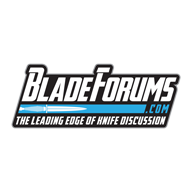Hey folks,
Basically what I want to know is how any of the guided-angle systems, or even freehand sharpening, might compare to the WSKO BGA mainly in terms of time required. I picked up a WSKO BGA mainly for reprofiling edges and doing heavy grinding. I still hone free-hand or with a Spyderco Sharpmaker for the most part. What I've found with the Work Sharp thus far is that:
1. It generates enough dust that it really can't be used indoors
2. Belts don't necessarily wear out quickly but they lose their initial aggressiveness pretty quickly and as they get more dull you have to use more and more pressure which ends up making an increasingly convex bevel.
3. In order to go slow enough to not risk overheating a blade I have to go slow enough that a hand-powered system might not take much more time
It's the last point that I'm trying to figure out. If something like a Hapstone could be 80% as efficient as the Work Sharp but be usable indoors and not require me to replace belts frequently then it might be a better system for me. I've reprofiled some larger blades using coarse bench stones like a Norton Crystolon and I'd say a coarse stone probably cuts about as fast as the Work Sharp with an 80 grit belt if you're able to grind back and forth on the bench stone but when I do that I lose precision and end up with a sloppy edge. I'm hoping that a guided-angle system like a Hapstone can remove enough of the skill required to allow me to grind quickly.
Thoughts from those of you who have experimented with different methods?
Thank you all for your time
Basically what I want to know is how any of the guided-angle systems, or even freehand sharpening, might compare to the WSKO BGA mainly in terms of time required. I picked up a WSKO BGA mainly for reprofiling edges and doing heavy grinding. I still hone free-hand or with a Spyderco Sharpmaker for the most part. What I've found with the Work Sharp thus far is that:
1. It generates enough dust that it really can't be used indoors
2. Belts don't necessarily wear out quickly but they lose their initial aggressiveness pretty quickly and as they get more dull you have to use more and more pressure which ends up making an increasingly convex bevel.
3. In order to go slow enough to not risk overheating a blade I have to go slow enough that a hand-powered system might not take much more time
It's the last point that I'm trying to figure out. If something like a Hapstone could be 80% as efficient as the Work Sharp but be usable indoors and not require me to replace belts frequently then it might be a better system for me. I've reprofiled some larger blades using coarse bench stones like a Norton Crystolon and I'd say a coarse stone probably cuts about as fast as the Work Sharp with an 80 grit belt if you're able to grind back and forth on the bench stone but when I do that I lose precision and end up with a sloppy edge. I'm hoping that a guided-angle system like a Hapstone can remove enough of the skill required to allow me to grind quickly.
Thoughts from those of you who have experimented with different methods?
Thank you all for your time


